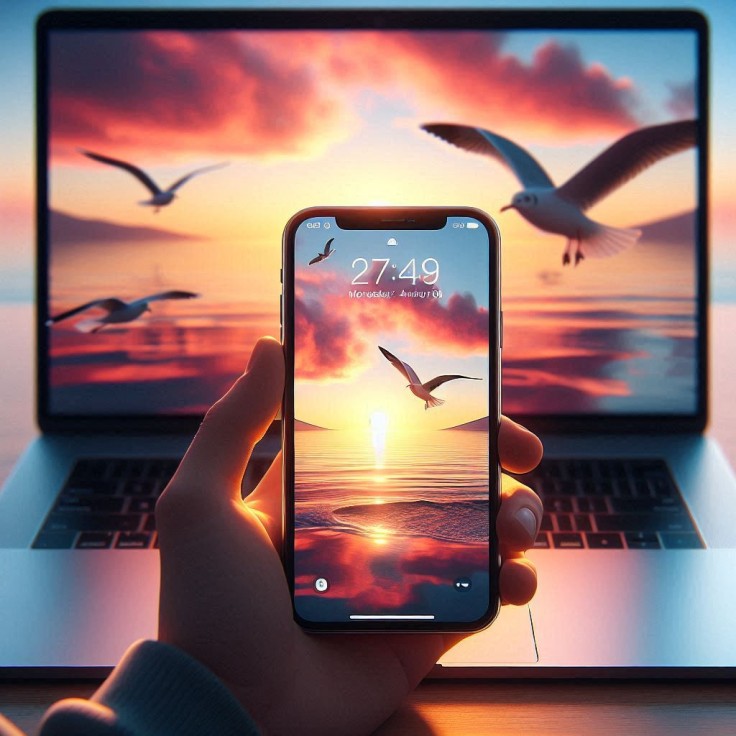
The need for seamless digital collaboration has never been more paramount. Whether for work presentations, media sharing, or simply enhancing entertainment experiences, the ability to mirror your iPhone screen to a Mac opens a realm of possibilities. This step-by-step guide unveils the intricacies of screen sharing, empowering users to effortlessly project their iPhone content onto a larger Mac display.
Harnessing the Power of AirPlay
Wirelessly, AirPlay becomes an iconic means among the iPhone-Mac screen sharing utility, which provides users with an easy and convenient approach. Here are the steps to follow to get into AirPlay and make your iPhone mirror the Mac screen.
- Ensure Compatibility and Connectivity: Before we move to screen mirroring options, check the compatibility of your iPhone and Mac for AirPlay. If you would like your iPhone to work properly over the network, you should use iPhone 7 or later and iOS 14 or later. Likewise, your Mac must be running macOS Monterey or newer, With this application, you need a MacBook, MacBook Pro, MacBook Air released in 2018 or newer, Mac mini from 2020 or newer, iMac, Mac Pro released in 2019 or newer, iMac Pro, or the new Mac Studio launched late 2022 or newer. Once the compatibility is confirmed, both the devices should be connected to the same Wi-Fi so that they can establish the communication channel.
- Initiate Screen Mirroring: Unlock the potential of AirPlay by navigating to the Control Center on your iPhone. Swipe down from the upper-right corner of the screen to unveil a plethora of options. Among these, locate the "Screen Mirroring" icon and tap to activate. A list of available devices, including your Mac, will populate. Select your desired Mac device to commence screen mirroring.
- Leverage Alternate Sharing Methods: Although direct streaming from third-party apps like Netflix or Disney+ to your Mac via AirPlay isn't feasible, alternative methods exist. For instance, native iOS apps such as the Photos app offer an avenue for media sharing. Launch the Photos app on your iPhone, tap the share button, select "AirPlay," and designate your Mac device. This enables seamless sharing of photos and videos, enhancing the versatility of screen mirroring.
Seamless Cable Connectivity with QuickTime Player
While wireless solutions like AirPlay epitomize convenience, a hardwired approach offers reliability and stability. Utilizing a cable connection via QuickTime Player facilitates seamless screen mirroring, ensuring uninterrupted sharing sessions.
- Gather Necessary Equipment: The readiness for screen mirroring implicates the acquisition of fundamental devices, such as hardware tools. Based on the kind of iPhone that you have, take a Lightning cable for the iPhone 7 and below, or a USB-C cable for the iPhone 7 Plus and above. To enhance compatibility it is advisable to ensure you match the port of your Mac that will allow easy connection.
- Navigate QuickTime Player Interface: If you are on a mac computer, open a quick time player to begin with the screen sharing. On the spectrum of QuickTime Player, open the "File "section and from there click on "New Movie Recording," this action creates a new window that displays possible recording options.
- Initiate Screen Mirroring: Optimize QuickTime Player's screen mirroring capabilities by configuring the recording settings. Click the downward arrow adjacent to the recording button and navigate to the "Camera" dropdown menu. Select your iPhone from the available options to establish a direct connection. Customize the recording quality by adjusting the "Quality" settings to "Maximum" for optimal resolution.
Exploring Third-Party Solutions for Enhanced Flexibility
While native functionalities like AirPlay and QuickTime Player suffice for most screen sharing needs, exploring third-party solutions can unlock additional features and compatibility across diverse devices.
- Introduction to Third-Party Apps: Do not stick to the conventional things as there are third party screen mirroring applications available for download that have the potentiality to cross the boundaries of traditional concepts. There are similar applications such as Reflector that provide a more complex approach to the mirroring process which include mirroring from iPhones as well as iPads, Android, Windows and Chrome book devices.
- Enhanced Compatibility and Features: Explore the many capabilities available in third-party apps in order to gain a deeper understanding of the screen sharing possibilities. However, these apps invariably come with extra features including the following; one can switch between operating systems, the settings can be configured according to one's preferences and in the apps, there is real-time collaboration.
- Troubleshooting and Optimization: Some third-party applications build on the screen sharing capability, although screen sharing is not always fault-free and can suffer from technical issues at times. Familiarize yourself with troubleshooting techniques to address common issues swiftly. Additionally, explore optimization strategies to maximize the efficiency and reliability of third-party screen mirroring solutions.
Mastering the art of screen sharing between your iPhone and Mac empowers you to seamlessly project content onto a larger display, fostering enhanced collaboration and entertainment experiences. Whether utilizing AirPlay for wireless connectivity, leveraging QuickTime Player for cable-based solutions, or exploring third-party apps for advanced functionalities, this guide equips you with the knowledge and tools to navigate the intricacies of screen mirroring with confidence and ease.
© Copyright 2025 Mobile & Apps, All rights reserved. Do not reproduce without permission.
















